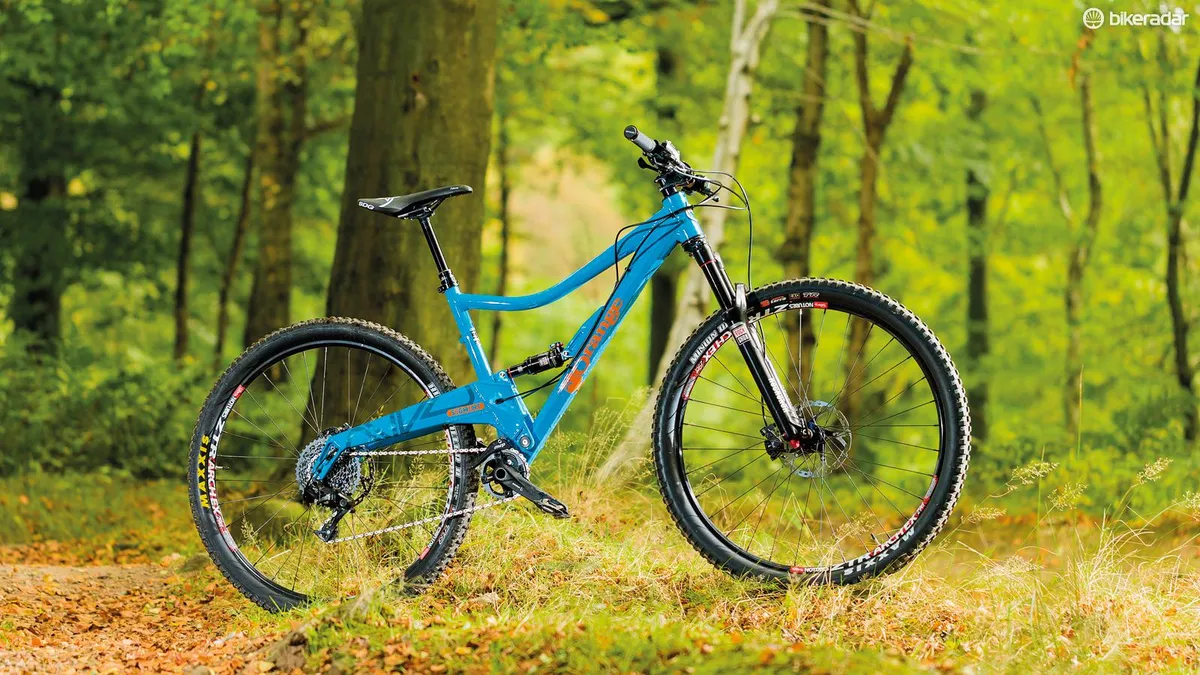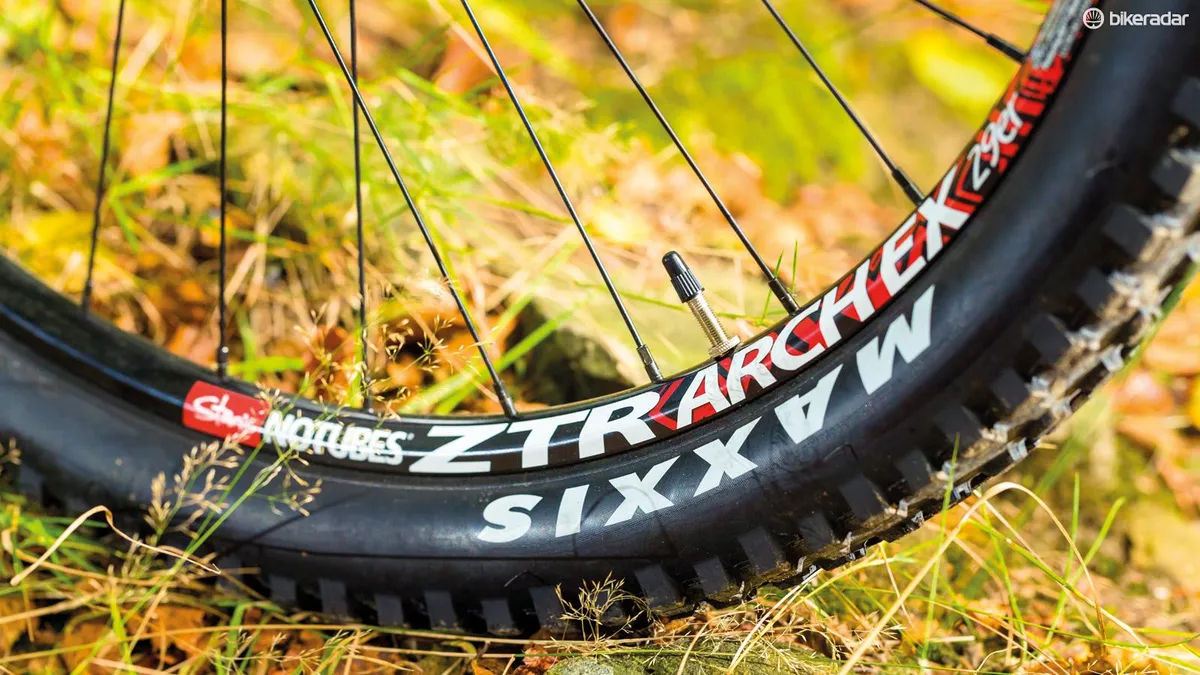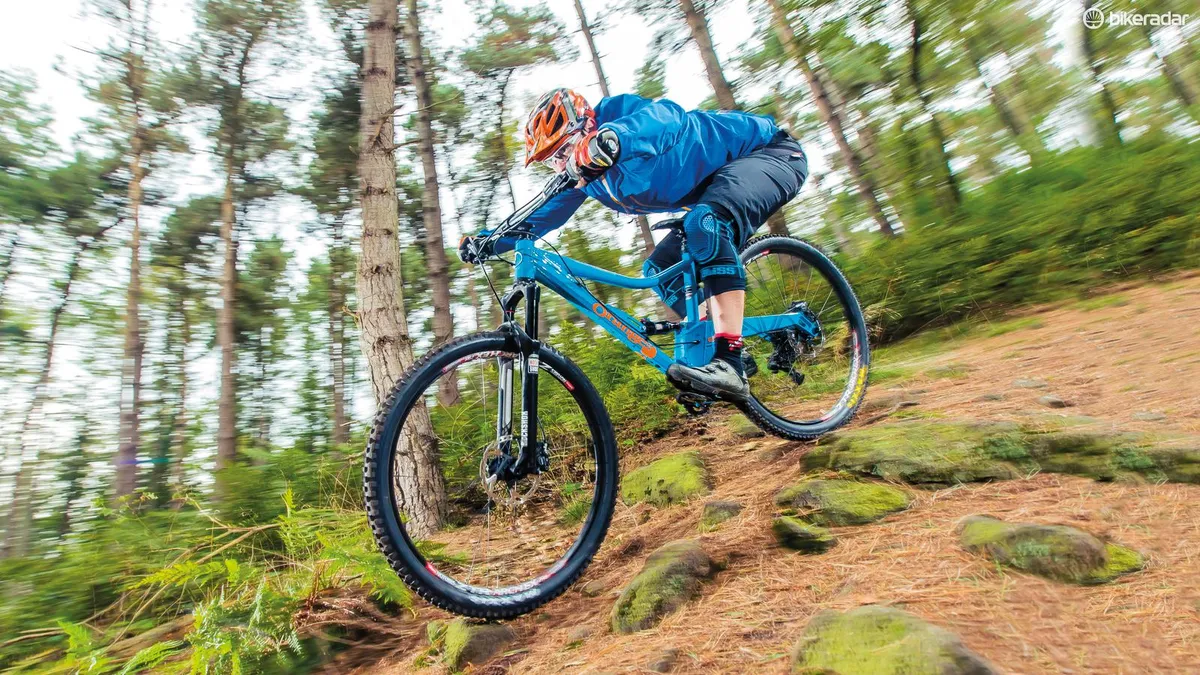There are few constants in mountain biking, but you’d be forgiven for thinking that the profile of an Orange bike is one. Yet while the West Yorkshire frame builder has settled on a monocoque down tube and deep section, single-pivot swingarm as its go-to design, when it comes to geometry and travel it’s never been afraid to try new things – and its bikes have been kept honest by constant evolution.
It’s in this spirit that the punningly titled Segment, named both for the portion of citrus fruit and the ride tracking app, has been created, using a head angle that’s relatively slack for a 120mm-forked 29er paired to a simply delivered 110mm of rear wheel bounce. Less travel means a perkier, direct ride feel, but traction is maximised by the big wheels. That’s all good in theory, but how does it work in practice?
Frame and equipment: top up the spec and get ready to descend
We’ve been testing the top level RS model, which starts at £3900. Orange offers a degree of customisation over its spec and our bike came hopped up with a pretty custom cyan paintjob, and an upgraded wheel and tyre package.
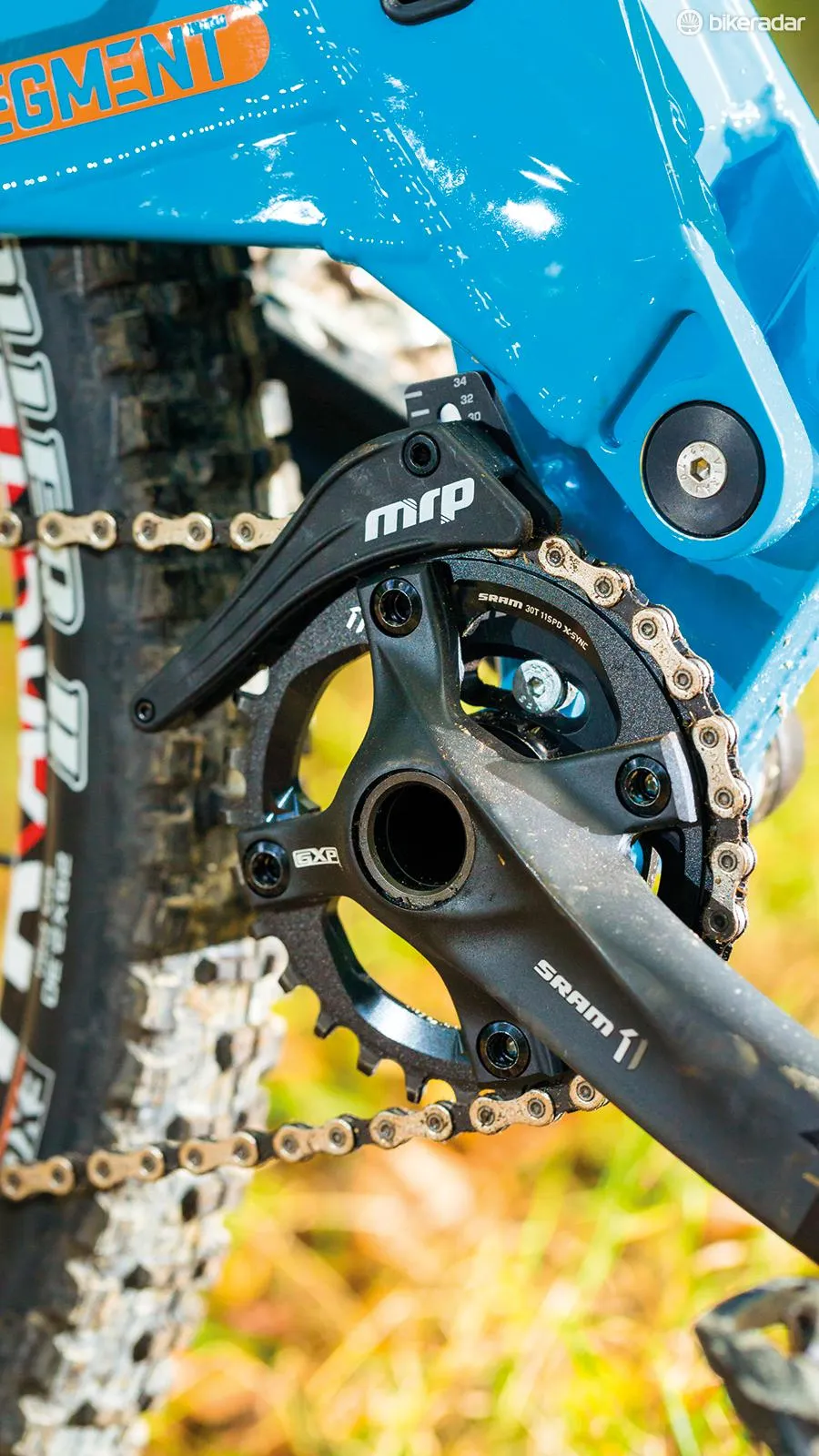
A SRAM 1x11 drivetrain is paired to a lightweight chain device
It’s well worth plumping the extra cash for the Maxxis tyre and Stan’s rim upgrade as the stock Continental Trail King rubber and low end, heavy Mavic XM 319 rims are best left in the parts bin. Given the choice we’d have gone for the wider Flow rather than the fitted Arch models. The Hope hubs are a welcome fixture however, as is the SRAM X1 11-speed drivetrain, internally routed Reverb dropper post and top level RockShox Pike RCT3 fork.
The cockpit is also a revelation, not that the fitted Kore kit is lightweight or fancy – it isn’t – but because the short 50mm stem is paired to 800mm-wide flat bars that keep front end height as low as possible. That extra leverage matters when it comes to wrangling big wheels through twisty trails and a lower front end makes the bike more eager to switch directions.
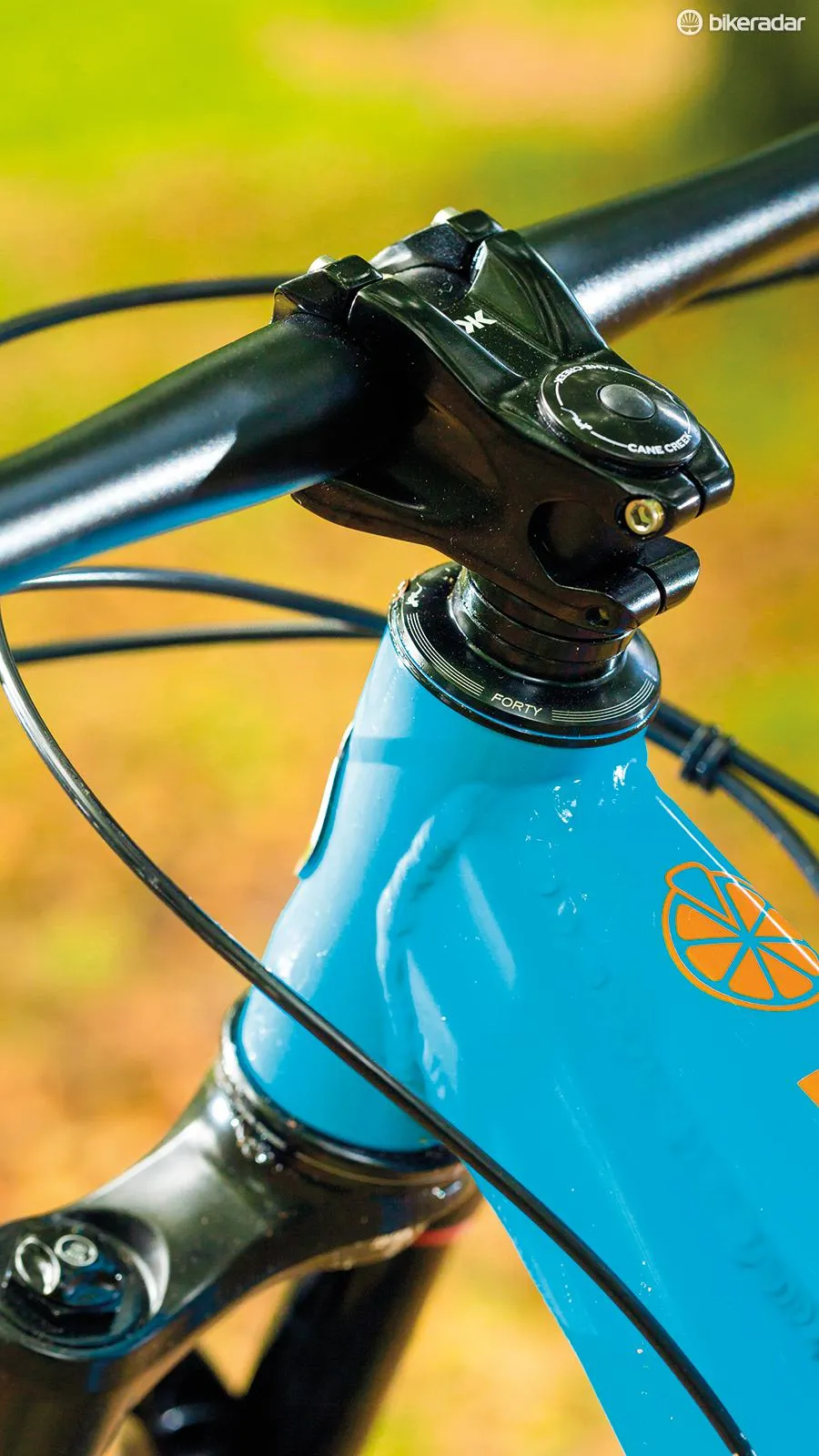
Stumpy stem and flat wide bars aid the handling
It’s worth mentioning, with ascents in mind, that this is a fairly bulky machine – our large framed bike tipped the scales at 13.95kg. Then again, to think of this as a cross-country ride and judging it by those standards would be missing the point badly. With a long-ish top tube (620mm for the large) and a slack (for a 29er) head angle, this Segment is unashamedly about letting rip once the trail turns downwards.
Ride and handling: great fun on the right terrain, but has its quirks
Nonetheless, even with just 110mm of travel, the Segment pedals well with minimal bob. Keep the rear wheel weighted and it stiffens up slightly in larger rear sprockets, biting down for traction and providing a firm platform, even for pedal mashers. Pedal kickback is present in higher gears though.
On super-high speed, flowing trails, the Segment is a taut pleasure, carving out smooth and precise arcs across terrain. The big wheels and minimal travel are just enough to mute chatter so that even on rocky and rooty sections the sensation is more like skiing than riding a bike.
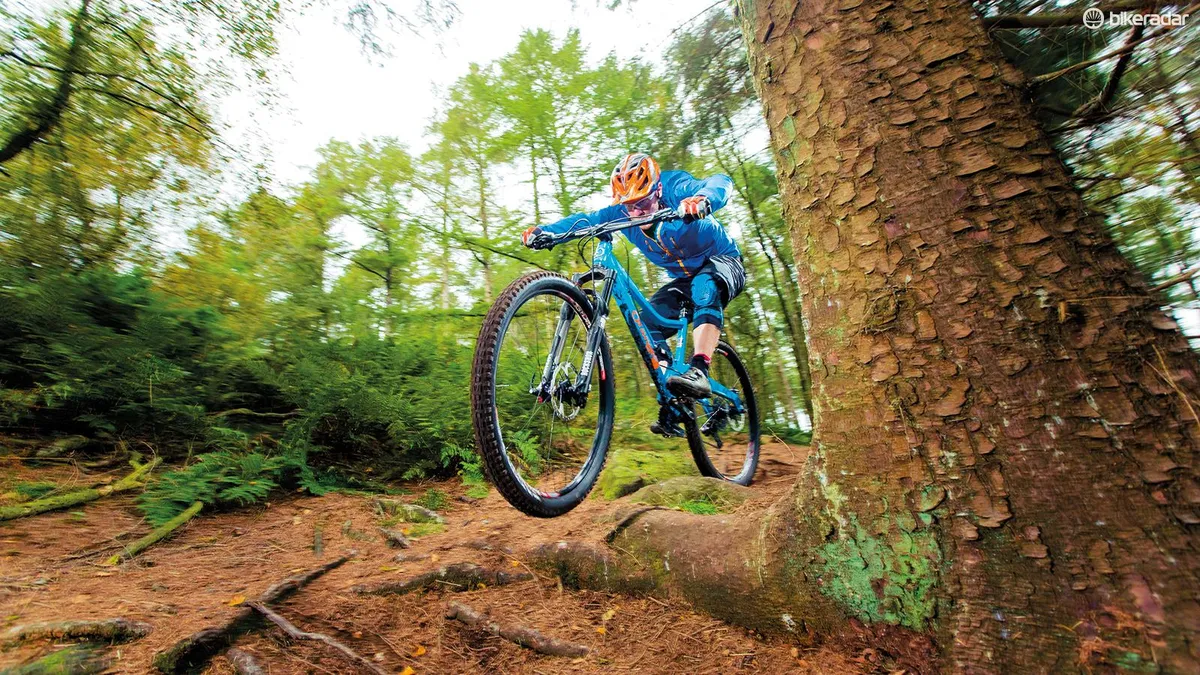
Point it down and it’ll make light work of most trails
The head angle is pretty much spot on as a compromise between stability and fast reactions with the big wheels, while there’s plenty of room in the front triangle to be able to shift weight about. It’s a hoot to ride on this sort of stuff, with the traction from the excellent Maxxis rubber encouraging ever-higher corner speed and a very predictable and balanced breakaway. If it doesn’t make you smile, you should check your pulse.
The Pike fork is also right on the money, with little discernible flex from the long legs and plenty of support from the Charger damper. Okay, if you charge into something really rough with all guns blazing you’ll be reminded fairly quickly that, while the feedback through the bars may make you think you’ve an extra inch or two of travel, you definitely don’t.
When things get really twisty, the added front end height over a 140mm 650b bike also means you’ll have to make more effort to lean the bike over to get it to turn in quickly. On rapid fire left-right jinks through trees, you can end up with the sensation of being wrapped up in your own elbows.
The chainstays are long at 450mm, which means there’s a good amount of bike behind you and it’s not too eager to pop up the front and manual through rollers or off drops. You’ll need to be awake to avoid tree stumps or similar low flying obstacles as the confidence inspiring low bottom bracket is matched to a set of 175mm arm length cranks, meaning we had a few issues with pedal strike. A set of 170mm items would neatly sidestep this without affecting the sweet handling.
The sitting pedalling position is decent, though the slack actual seat angle means the effective top tube grows a fair amount as you go higher, adding to an already rearward biased feel. That’s fine, but on steep climbs you’ll need to get over the front to prevent it getting vague as weight transfers away from it.
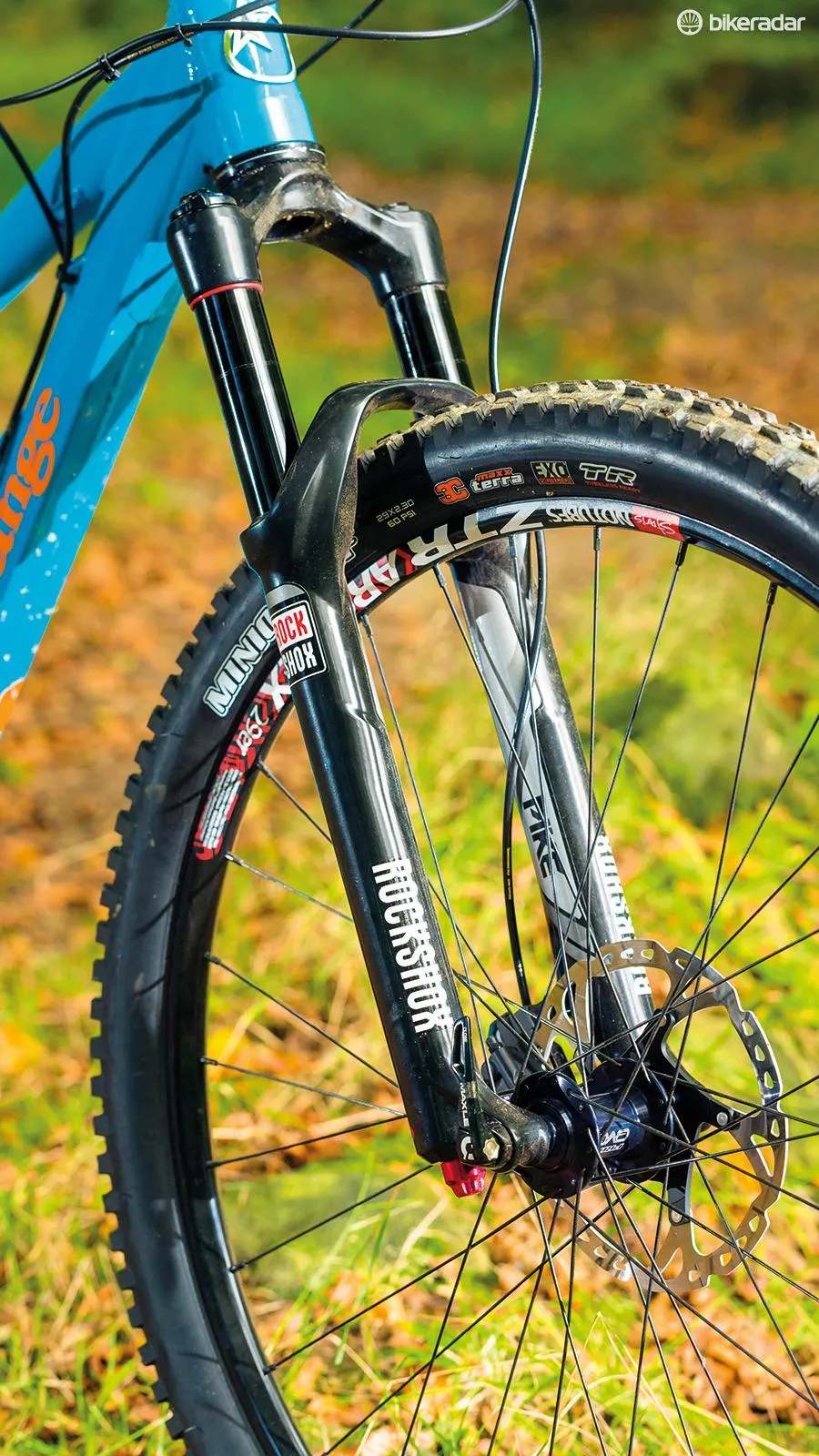
RockShox' Pike fork has long but beefy legs, so twist up front isn’t an issue
While we’re grumbling, the rear end is noticeably less compliant than the front, with more of an inclination to slap off the top of bumps. Some of that’s down to the single-pivot design and relatively short 38mm stroke shock but it’s certainly not helped by the fact the RockShox Monarch is the basic RL, which does without the Rapid Recovery damping of the RT3. You can upgrade to a Kashima-coated Fox Float CTD unit for £220, but ideally, we’d like to see something like the Cane Creek DBInline offered. This would offer a greater degree of damping control and progression.
We struggled to tune the shock to work well at either extreme; if set up for a more playful, springy feel to the start of the stroke, rebound over bigger hits bucked us forwards, if the rebound was increased to tame this, the bike started to feel dead. We ended up running the rebound almost entirely closed, which suggests the base tune is off.
A bit more mid-stroke progression in the spring would also help balance the tendency the bike has to ramp up quickly right at the end of the travel, but playing with volume spacers helps with that. You can also feel a bit of twist from that long rear swingarm, but if anything that just makes the bike a bit more forgiving.
Ultimately the Segment is a bit of an oddity. Get it on the right terrain and we’ve no doubt it would match and possibly exceed the pace of Orange’s 150mm travel, 650b-wheeled Five, even if the sub-par Monarch shock does reduce the full potential.
The bulk and limited travel tend to work against it at extremes of both climbing and descending. It’s a double-edged sword; lighter rubber would make it easier to haul up climbs but reduce the fun feel when heading back down. With the Segment it’s fitting to use a Strava analogy – it’s unlikely to be the King of the Mountain even within Orange’s bike range, but if you like short travel bikes that aren’t just about uphill speed, the Segment might well be a new Personal Best.
Note: This is an upgraded version, the standard version is £3900 / AUD$6299
